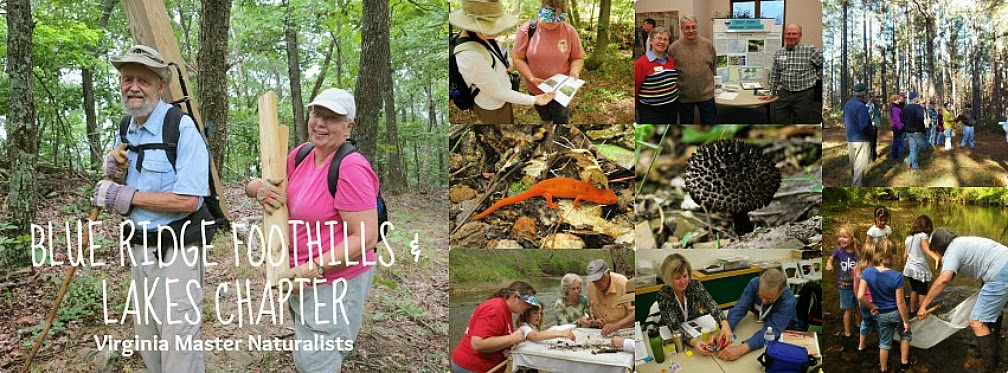On a rather pleasant February 8th winter day, a group
of Blue Ridge, Foothills and Lakes (BRFAL) Virginia Master Naturalists met with
met Mr. Ryan Klopf, Mountain Region Steward, Department of Conservation &
Recreation (DCR), Division of Natural Heritage and his two henchmen, Wes and
Jonathon at Bald Knob Natural Area Preserve (NAP) in order to remove as many
privet shrubs as possible.
But first, a little background about Bald Knob NAP. It is
the newest NAP in Virginia. The site is called a Piedmont mafic barren
where exposed rocks resist weathering and have unusual chemical properties,
making them and their derived soils different from typical Piedmont
sites. Due to the soil make-up, the NAP is home to the very rare Piedmont
fameflower (Phemeranthus piedmontanus) and has only been
documented at a handful of sites in the world. Ryan explained that the
mafic rock in Rocky Mount was originally formed due to volcanic activity.
The original lava was then compressed into a very hard rock that erodes very
slowly. The rock is estimated to be about a billion years old and was
formed when the Atlantic Ocean was forming for the first time. Bald
Knob is one of the most significant conservation sites in the Piedmont.
So what are privet shrubs and why
are they considered invasive? The
following is an excerpt from Wikipedia on the subject:
“Privet refers
to any of a number of shrubs or trees in the genus Ligustrum.
The genus contains about 50 species[1] native to
the Old World and Australasia.[2] Many members of the
genus are grown as ornamental plants in parts of the world, including the
United States.
Several species of privet have
become a nuisance in regions outside its range. In these conditions it is most
commonly found wherever there is disturbed soil, soil that is physically
perturbed from its natural state through fire or mechanical machinery, such as
along fencerows, old fields, ditches, and forest margins.[3] Privet grows
particularly well in riparian forests, which
are found throughout the southeastern United States.[4] Although tolerant of
varying soil and light conditions, including a tolerance for shade, privet
survives best in mesic soil with
abundant sunlight.”
As you may surmise, the privet
plant can out compete the very valuable and rare Piedmont fameflower. So armed with loppers, pruning saws, a
Sawzall and a chainsaw, our team of volunteers attacked the offending invaders
with enthusiasm and camaraderie. After
about 4 hours our enthusiasm was tempered with sore muscles and aching
joints. (The median age of our
volunteers was well above 60). Our
efforts were highly successful with at least a half dozen brush piles over 6
feet high. Although we made a big dent
in the privet population, there is still more to go. We shall return!






Congratulations to an awesome team! I am certain privet quivers with fear as any one of you walks by now. Thanks for a remarkable effort! CH
ReplyDelete